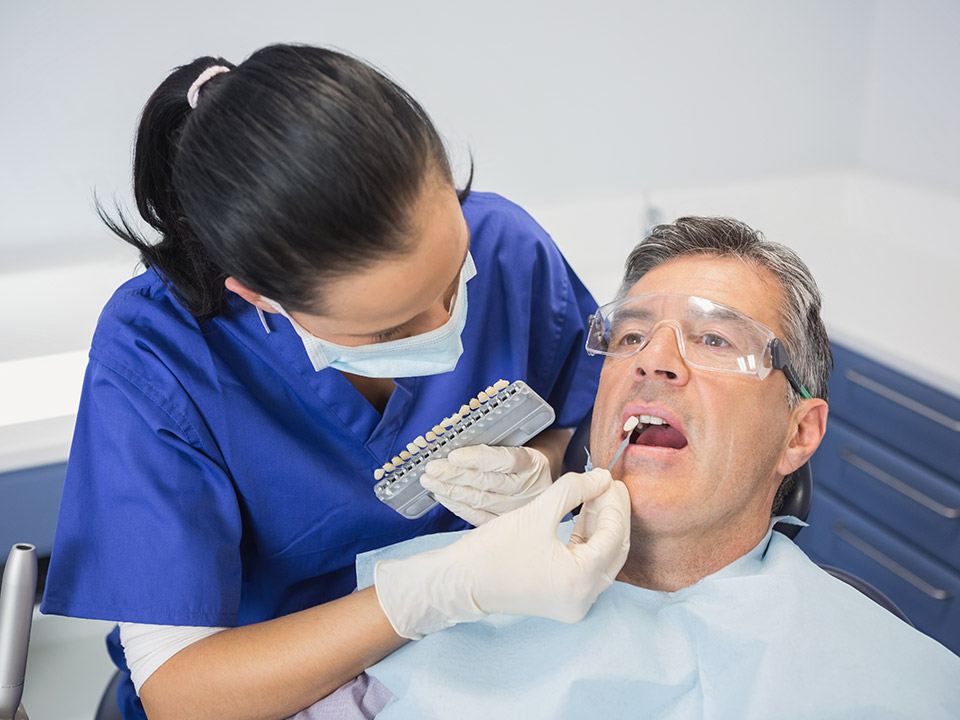Cosmetic dentistry is a type of professional dental care that focuses on making your teeth look better. Even though cosmetic dentistry procedures are usually optional rather than mandatory, some cases of treatment have restorative benefits.
Cosmetic dentistry aims to make people feel good about the way their teeth look, whether through minor adjustments or major changes. There are a variety of procedures that can improve the appearance of your teeth and correct issues like discoloration, chips, gaps, and irregularities. Bonding, veneers, bleaching, reshaping, and crowns are all common options. These procedures can help with a variety of oral issues besides cosmetic improvements.
The cost, complexity, and outcomes of these procedures vary. To determine the best procedure for you, speak with your dentist about your options. The state of your teeth is a major consideration when choosing a treatment, and what worked for someone else might not work for you.
It is critical to gather all necessary information before undergoing a cosmetic procedure to be satisfied with the results. You should learn about the changes that will occur, what to expect during treatment, and what kind of maintenance you will need afterward. You should also request before and after photos to ensure that what to expect is reasonable.
Procedure for Cosmetic Dentistry
A cosmetic dentist is in charge of a wide range of procedures, from minor adjustments to major surgeries. We list a few of the cosmetic procedures they provide below:
1. Teeth Whitening
Teeth whitening is one of the most common cosmetic dentistry procedures, and it’s also one of the most affordable. Food, drinks, medications, and other habits like smoking can stain teeth over time. Many people use teeth whitening to brighten their smiles. Teeth whitening can bleach the surface of teeth to create a brighter, whiter appearance after you have removed plaque, tartar, and other debris. Professional tooth whitening can provide a shade up to 5 to 8 times lighter than over-the-counter products like toothpaste, rinses, and white strips.
2. Dental Veneers
Veneers are very thin white shells made of medical-grade porcelain, resin, or ceramic. They’re made specifically for each patient to look like their natural teeth. The dentist removes some enamel from the tooth’s surface before attaching the veneers so that the shells can bond realistically to the front of the teeth. Dental veneers can correct a variety of cosmetic issues, such as crooked teeth, worn enamel, and gaps between teeth.
3. Dental Crown
A dental crown, also known as a dental cap, covers a tooth that is decayed or damaged. These crowns are used to prevent a weakened tooth from breaking or to cover misshapen or severely discolored teeth cosmetically. You can cover other procedures, such as root canals, enamel fillings, dental bridges, and dental implants.
4. Inlays and Onlays
Indirect fillings, which are made by a dental laboratory, are another name for this cosmetic dentistry procedure. You use this when a tooth has mild-to-moderate decay or there is insufficient tooth structure to support a filling. The dentist positioned the inlay onto the tooth surface if there was no damage to the tooth cusps. When damages occur to the cusp or a larger portion of the tooth, your dentist may use an onlay to cover the entire surface of the tooth.
Inlays and onlays were once made of gold, but we typically make them in a dental laboratory from a composite of porcelain or ceramic material and adhered to the teeth with dental cement adhesive. They support teeth by strengthening them, restoring their shape, and preventing further decay and deterioration.
5. Composite Bonding
Composite bonding is repairing decayed, damaged, or discolored teeth with a material that closely resembles the color of tooth enamel. Your dentist removes the decayed tooth, then applies the composite to the tooth’s surface, “sculpts” it into the desired shape, and cures it with a high-intensity light. This procedure, also known as “bonding,” effectively covers the damaged tooth and gives the appearance of a healthy tooth in its place. Patients with tooth decay chipped or cracked teeth, or worn-down edges can benefit from bonding, which is one of the most affordable cosmetic dentistry procedures.
6. Implants
Dental implants are used to replace lost or damaged teeth. The dentist inserts a small titanium screw into the jaw at the site of the missing tooth, which acts as a support for a crown. These implants are nearly indistinguishable from the natural teeth around them. This procedure permanently secured the implant into place once the bone and supporting tissue fuse to it. To clean plaque and food debris from the area, patients must practice diligent oral hygiene during the implant placement period and after the completion of the procedure.
7. Orthodontics
Orthodontics, which is otherwise known as braces, can straighten crooked or misaligned teeth and improve the health and appearance of any smile, whether it’s for an adult or a child. Braces work by edging teeth into alignment by applying consistent pressure over time. The bony tooth socket changes shape as the teeth move and you apply pressure.
People still use metal braces, but they can be as discreet as you want. Brackets, which attach to each tooth, come in a variety of colors: clear, tooth-colored, and multi-colored. Someone can even affix them to the back of the tooth to keep them hidden. There are even “invisible” braces that use a series of clear plastic molds to gradually realign the teeth.
8. Gum Reshaping
Gum reshaping can help with a “gummy” smile, where the teeth are too short or the gum line is uneven. You remove a small amount of gum tissue and contoured to expose more of the teeth, as well as any excess bone tissue if necessary. You can perform this procedure on a single tooth to even out the gum line or on a group of teeth to reveal a natural, broad smile.
Why Should I See a Cosmetic Dentist?
There are a variety of reasons you might visit a cosmetic dentist, including:
- Damage(in form of cracks, chips, etc.)
- Tooth Decay
- Misshapen teeth
- Crooked teeth
- Missing teeth
- Discoloration
People who have teeth that are damaged, decayed, crooked, or discolored may have difficulty eating and speaking. Others may suffer from low self-esteem because of dental problems. According to a 2015 survey conducted by the American Dental Association, 33 percent of young people are hesitant to smile because of dental and mouth issues. Another 23% of adults have reduced their social activities because they are self-conscious about their smiles. A cosmetic dentist can improve the condition of your teeth if you are unhappy with your smile.
If you’re thinking about cosmetic dentistry, it’s critical to find a cosmetic dentist who specializes in the procedure you want. They’ll give you more information about which procedures are best for you.







